In this article:
The skin is the largest organ of the body, and it gets exposed to a wide range of environmental factors and irritants every day. Sometimes the skin reacts to these irritants and this results in a rash.
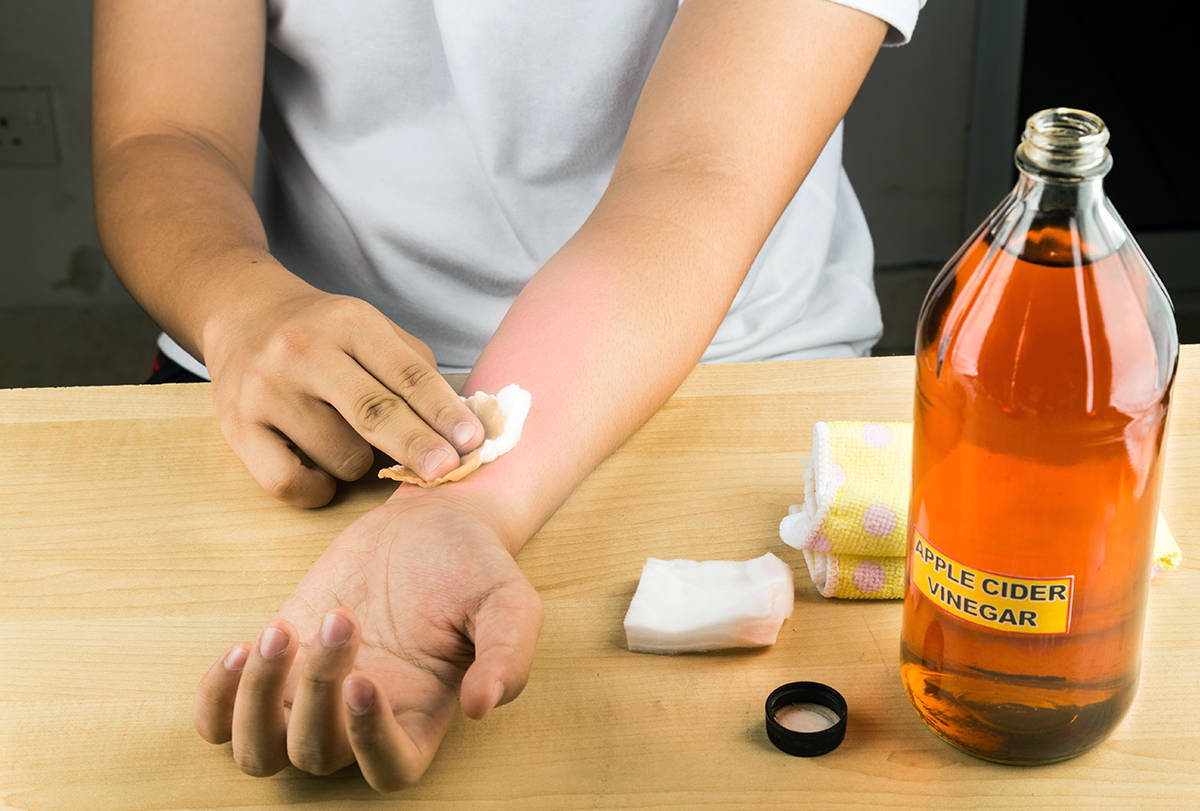
A rash is defined as a noticeable change in the texture or color of your skin. Rashes can appear anywhere on the skin and may affect just one part of the body or the entire surface of the skin. These result in the urge to scratch the surface of the skin due to dryness. (1)
Ways to Use Apple Cider Vinegar for Managing Rashes
Here are some of the best ways to use apple cider vinegar for a rash.
1. Diluted apple cider vinegar
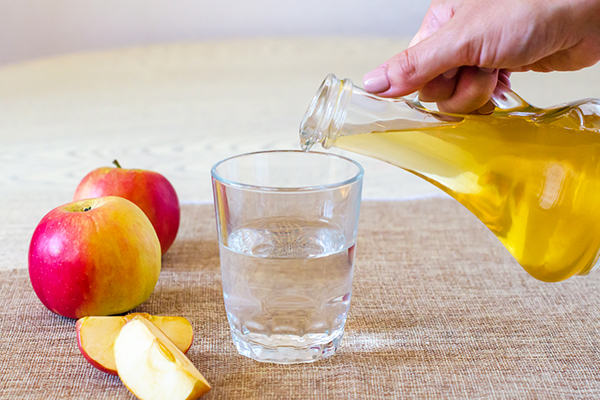
This remedy is perfect if the rash is on a localized body part, like the hands or legs.
Things you’ll need:
- Apple cider vinegar
- Water
Directions:
- Mix equal amount of raw, unfiltered apple cider vinegar and filtered water in a bowl.
- Dip a cotton ball in this solution.
- Apply the solution directly to the affected area.
- Repeat 2–3 times a day until the rash is gone.
You can also add the mixture to a spray bottle and spritz it on the affected area.
Note: Those who have sensitive skin should add ¼ cup of raw, unfiltered vinegar to 3 cups of water.
2. Apple cider vinegar bath
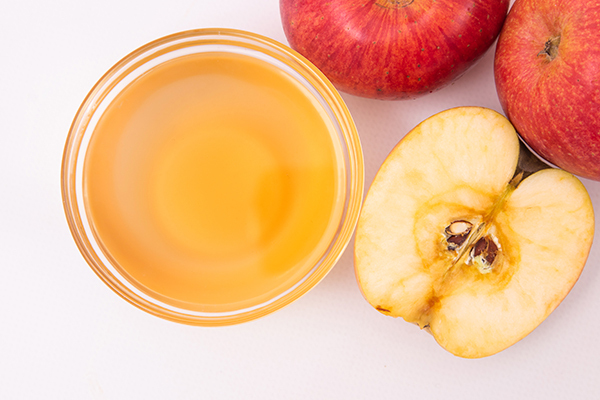
Apple cider vinegar is also beneficial when a large area of the body is affected by rashes.
Things you’ll need:
2 cups of apple cider vinegar
Directions:
- Mix the 2 cups of apple cider vinegar in your lukewarm bathwater.
- Soak in the bath for about 30 minutes.
- Pat the skin dry gently with a soft cotton towel until it is slightly moist.
- Moisturize your skin immediately with a moisturizer.
- Wear loose clothes to avoid itching.
- Repeat this 3–4 times a week for best results.
3. Apple cider vinegar and coconut oil

When combined with coconut oil, apple cider vinegar works as a great moisturizer for your skin. It helps keep the skin moisturized while restoring your skin’s pH balance too.
A 2010 study published in Pharmaceutical Biology shows that coconut oil can reduce inflammation and soothe painful skin. (2)
Things you’ll need:
- 1 tablespoon of apple cider vinegar
- ¼ cup of extra virgin coconut oil
Directions:
- Add 1 tablespoon of raw, unfiltered apple cider vinegar to a ¼ cup of lukewarm extra virgin coconut oil.
- Mix thoroughly until you get a smooth liquid.
- Use it as a moisturizer on the affected area several times a day.
4. Apple cider vinegar clay pack
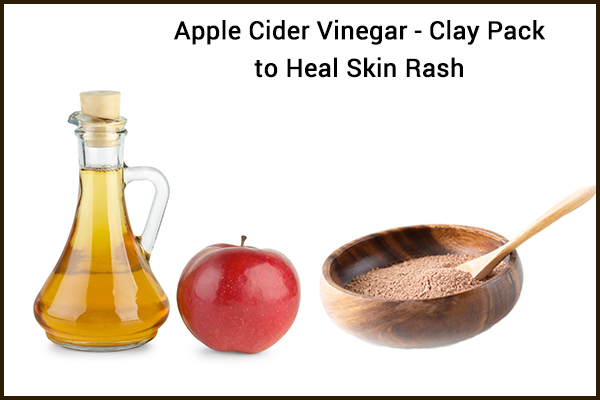
While apple cider vinegar’s alkaline properties are effective at treating skin rashes, clay helps absorb the toxins from the skin and clarifies it.
Things you’ll need:
- 2 tablespoons of clay powder
- 2–3 tablespoons of apple cider vinegar
Directions:
- Put 2 tablespoons of powdered clay in a glass bowl.
- Slowly add 2–3 tablespoons of raw, unfiltered apple cider vinegar.
- Using a wooden spatula, mix the apple cider vinegar and clay slowly to get a smooth paste.
- Spread out this mixture onto a porous cloth that is enough to cover the rash area.
- Lay this cloth onto the affected area like a bandage, and let it dry completely.
- Then, take the cloth off and wash the area.
5. Apple cider vinegar tonic
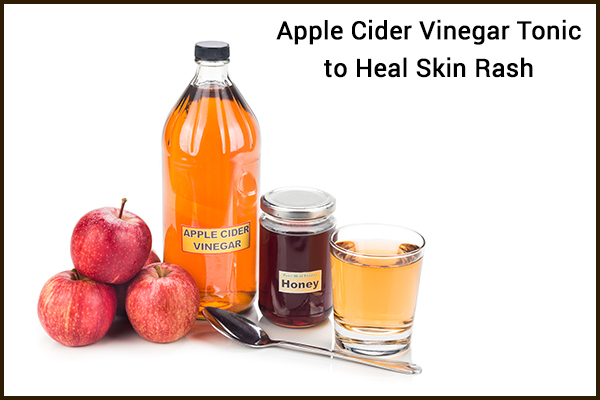
Internal intake of raw, unfiltered apple cider vinegar can help remove toxins from the body and maintain the pH level of the skin.
Things you’ll need:
- 1 tablespoon of apple cider vinegar
- 1 cup of lukewarm water
- Blackstrap molasses or honey (as required)
Directions:
- Add 1 tablespoon of raw, unfiltered apple cider vinegar in 1 cup of lukewarm water.
- Add a little blackstrap molasses or honey to the mixture to enhance its taste.
- Mix thoroughly, and drink this thrice a day.
6. Apple cider vinegar with baking soda
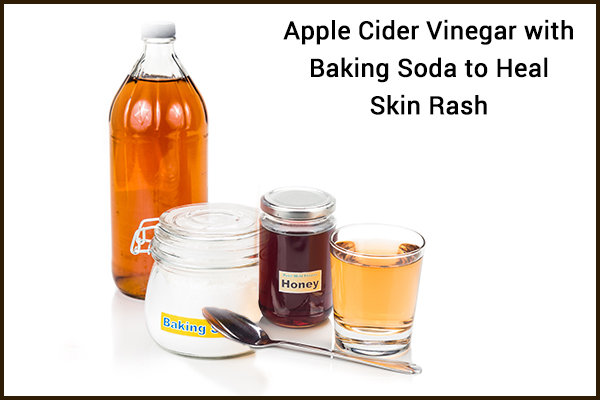
Baking soda helps dry out skin rashes, and it even provides relief from the itching and inflammation associated with rashes. So, when combined with apple cider vinegar, the treatment becomes more effective.
Things you’ll need:
- ¼ teaspoon of baking soda
- 2 tablespoons of apple cider vinegar
- ½ cup of water
- A little bit of honey
Directions:
- Add ½ teaspoon of baking soda and 2 tablespoons of raw, unfiltered apple cider vinegar to ½ cup of water.
- Mix well, and soon you will notice a little fizz.
- Once the fizz has stopped, add a little honey.
- Stir thoroughly and drink this solution once a day.
What Makes Apple Cider Vinegar Suitable for Treating Rashes?
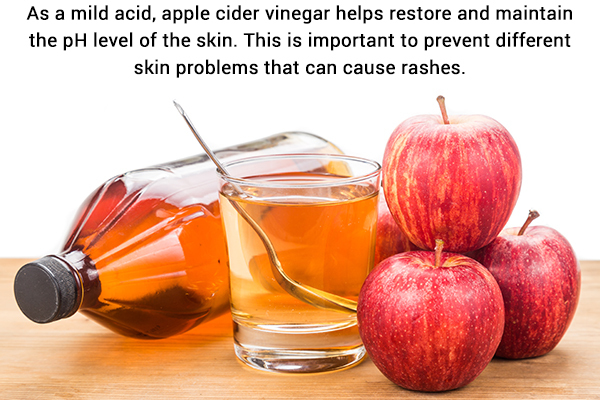
Apple cider vinegar is prepared in two steps. In the first step, crushed apples are exposed to yeast to turn them into alcohol by fermenting the sugars. The second step involves adding bacteria to the alcohol solution to ferment the alcohol and turn it into acetic acid.
The whole process makes apple cider vinegar rich in acetic acids and several nutrients, such as vitamins C and B.
When it comes to home remedies for rashes, you simply cannot ignore the benefits of apple cider vinegar. Its acetic acid content helps counter skin infections or skin allergy that could be causing or aggravating the problem.
As a mild acid, apple cider vinegar helps restore and maintain the pH level of the skin. This is important to prevent different skin problems that can cause rashes.
A 2016 study published in the Journal of Investigative Dermatology reports that pH levels play a role in the breakdown of the skin’s protective barrier. Acidity levels are also related to a breakdown in the skin’s microbiota, which helps protect you from bad bacteria. (3)
A 2006 study published in the International Journal of Cosmetic Science demonstrated that skin with pH values below 5.0 is in a better condition than skin with pH values above 5.0, as shown by measuring the biophysical parameters of barrier function, miniaturization, and scaling. (4)
Apple cider vinegar also boasts antimicrobial properties that help in treating rashes caused by some virus or bacteria. This ingredient also acts as an astringent, thereby removing oil, bacteria, and other impurities from your skin. It is a good source of potassium, which helps in dealing with allergic conditions such as eczema.
A recent study in 2017 cited that apple cider vinegar possesses antibacterial activity at 25% dilution but is less effective against fungi, yeast (like Candida), and viruses. (5)
Another study published in the Science Rep in 2018 demonstrated the ability of apple cider vinegar to downregulate inflammatory markers in a dose-dependent manner and that a minimum dilution of ACV was required for growth inhibition of Candida albicans (at 50% dilution), Escherichia coli (2% dilution), and Staphylococcus aureus (4%). (6)
Caution: Like many topical products, irritation may develop with overuse or in those with very sensitive skin. A study published in 2012 in the Journal of the American Academy of Dermatology demonstrated the development of a burn from the use of apple cider vinegar. (7) Another study published in Pediatric Dermatology documented a chemical burn caused by apple cider vinegar in a newborn. (8) It is always better to test a small patch of skin before applying it all over.
Causes Associated With Rashes
This minor but annoying skin issue can be caused by a number of reasons, such as:
- Insect bites
- Flea bites
- Rosacea
- Impetigo
- Ringworm
- Contact dermatitis
- Allergic eczema
- Diaper rash, psoriasis
- Shingles
- Cellulitis
- Drug allergy
- Measles
- Excessive sweating
- Use of soaps, detergents, shampoos or cosmetics that do not suit the skin.
- Tick bite
- Irritants like artificial jewelry, fabrics, and latex.
- Contact with certain poisonous plants like poison ivy or oak to name a few.
Rashes can also be a symptom of certain bacterial, fungal or viral infections. Most rashes are relatively minor and respond well to home treatments.
Raw and organic apple cider vinegar is a common home remedy for treating skin rashes and ease itching. As with many other natural products, caution should be used as well, as it can be irritating to very sensitive skin. Always perform a test area first, before applying it all over!
Symptoms Associated With Rashes
Other than the change in its color and texture, the skin may show other symptoms too and become scaly, bumpy, itchy, or otherwise irritated. (9)
More severe rashes may be accompanied by extreme dryness of the skin, cracking, blistering, and pain. Some rashes may even cause fever and a general ill feeling throughout the body.
Additional Tips
- There are few risks associated with apple cider vinegar. However, you should always consult a doctor before using it to treat infants or small children.
- Applying apple cider vinegar directly onto the skin may cause a fiery sensation; hence, those who have a sensitive skin must never apply undiluted apple cider vinegar on the skin.
- Drink plenty of water if you are prone to skin allergies and rashes. Water flushes away harmful toxins from our body.
- Include a lot of fresh fruits and vegetables to increase your vitamin C source to boost your immunity.
- Was this article helpful?
- YES, THANKS!NOT REALLY



